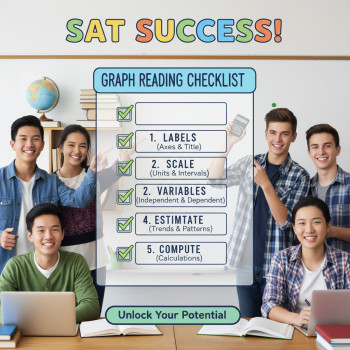Why this matters: SMU, the SAT, and your application story
If you’re a student (or a parent of one) aiming for Singapore Management University (SMU), the admissions journey can feel like both an exciting opportunity and a complex puzzle. SMU looks for students with intellectual curiosity, the ability to thrive in seminar-style learning, leadership potential, and strong academic foundations. The SAT is one piece of that puzzle: a standardized snapshot of college readiness that many international applicants still use to strengthen their applications.

Does SMU require the SAT?
Admission policies change, and schools sometimes adjust their testing expectations for different application years. Historically, SMU has accepted a range of standardized tests from international applicants (SAT, ACT, IB, A‑Levels, and other country-specific qualifications). For many international applicants, submitting an SAT score remains a straightforward way to provide an objective measure of academic readiness, especially if school curricula and grading are difficult to compare across countries.
Practical takeaway: Treat the SAT as a strategic option—one that can strengthen your profile when your school grades, curriculum, or extracurricular context benefit from an additional standardized measure of academic ability.
What score should you target for SMU?
SMU does not publish a single “minimum” SAT that guarantees admission. Instead, admissions decisions are holistic. That said, competitive applicants to SMU—especially for popular majors like Business Management, Accounting & Finance, and Information Systems—typically present SAT scores that show strong quantitative and reading/writing skills.
How to set your target score:
- Start with realistic ranges: find the midpoint of your practice scores and set a stretch goal about 50–150 points higher.
- Context matters: if your school’s grading is rigorous or your transcript is unusually strong, a slightly lower SAT can still be fine. Conversely, if your transcript is weaker or nonstandard, a higher SAT can help demonstrate readiness.
- Use percentile thinking: aim to be in at least the middle 50% of admitted students for selective institutions—higher if you want to be a standout.
Example target framework (illustrative):
| Admission Tier | Digital SAT Total (Estimated) | Strategy |
|---|---|---|
| Competitive | 1350–1450 | Show academic readiness; combine with strong essays and activities. |
| Very Competitive / Aspirational | 1460–1550+ | Aim to be a clear stand-out for top programs or scholarships. |
| Supplemental Strength | 1200–1340 | Use the SAT to supplement strong grades or special talents. |
Note: These numbers are illustrative ranges to help you plan. Admissions decisions depend on the entire application—personal essays, recommendations, portfolio (if applicable), extracurriculars, and interview performance.
Digital SAT vs. paper SAT: what applicants should know
The SAT has transitioned to a digital format in many locations. The Digital SAT is shorter, delivered on a device, and still assesses the core skills admissions officers care about: critical reading, effective reasoning, and math problem-solving. If you plan to take the SAT for SMU, prioritize practice that mirrors the actual digital experience.
- Practice on a device similar to the testing environment.
- Work on pacing: the Digital SAT has different section lengths and adaptive elements, so timed practice is essential.
- Focus on the digital tools: learn the on-screen calculator, highlighting, flagging questions, and navigation behaviors.
What part of your application will the SAT influence most?
Think of the SAT as an amplifier: it amplifies academic signals in your application. Here’s how it interacts with other components:
- Academic readiness: a strong SAT can reassure admissions committees if your school’s grading is unfamiliar or your curriculum differs from common international systems.
- Scholarships and awards: some merit-based awards consider test scores, so higher SATs can open doors beyond admission.
- Course placement: certain universities use scores to place students in appropriate first-year courses, although policies vary.
Real-world example
Two applicants to SMU with similar GPAs—one from a well-known international curriculum and the other from a lesser-known local school—may be evaluated differently. If the latter student presents a high SAT score, admissions officers gain additional confidence in that student’s readiness to take on rigorous, discussion-based classes at SMU.
Preparing the smartest way: study plan, timeline, and resources
Effective SAT prep is precise: diagnose, focus, practice, review, repeat. The timeline below assumes a student starting prep six months before their planned test date, but it’s flexible.
- Month 0 — Diagnostic: Take a full, timed Digital SAT practice test to identify strengths and weaknesses.
- Months 1–3 — Foundation & Content: Target foundational math topics (algebra, functions, statistics) and reading skills (passage structures, evidence-based reasoning). Build vocabulary in context, not rote lists.
- Months 4–5 — Strategy & Timed Practice: Focus on question types you miss most. Drill sections under timed conditions and practice the adaptive format.
- Month 6 — Polishing & Test Readiness: Take 2–3 full digital practice tests, refine pacing, and build test-day routines (sleep, nutrition, device familiarity).
Tools and supports that actually help
- Official Digital SAT practice materials: always start with official practice tests to mirror the real exam.
- Khan Academy-style practice for content mastery and targeted drills.
- One-on-one tutoring when you need tailored feedback: personalized tutoring like Sparkl’s offers 1-on-1 guidance, tailored study plans, expert tutors, and AI-driven insights to help you zero in on high-impact improvements.

Common mistakes Singapore applicants make (and how to avoid them)
- Waiting too late: Many students delay diagnostic testing or assume last-minute cramming will close score gaps. Start with a diagnostic early.
- Ignoring the digital format: Practicing only on paper misses the pacing and interface differences of the Digital SAT.
- Over-emphasizing raw hours over focused practice: Quality beats quantity—targeted practice on mistake patterns is more effective than endless untargeted drills.
- Not integrating application strategy: The SAT should support your narrative. If you’re aiming to show particular strengths (e.g., quantitative ability for a finance major), make sure your prep plans emphasize those areas.
How to present the SAT in your SMU application
If you submit SAT scores, place them thoughtfully within your application:
- Include the score in your academic section where required, and be transparent about test dates.
- Use your personal statement and supplemental essays to explain context—if you improved substantially through hard work or overcame circumstances, that growth story matters.
- If you used a tutor or program, focus on outcomes: what skills you built and how you applied them (rather than listing services).
Interview and holistic elements: where SAT scores intersect with your story
SMU values communication, leadership, and real-world problem solving. A strong SAT can open an initial door, but interviews, essays, and extracurricular impact how the admissions committee perceives fit. Use SAT prep time to also practice articulating your academic interests and experiences—combined preparation helps you present a coherent, confident application.
Scholarships, placements, and other practical considerations
Some scholarship decisions reference standardized test scores. Additionally, high digital SAT scores can occasionally be used for course placement—so it’s worth aiming for a score that supports both admission and academic positioning. If scholarships are an important part of your plan, target your score accordingly and confirm SMU scholarship criteria for the application cycle you are applying to.
Checklist for a strong SAT plan when applying to SMU
- Take a diagnostic Digital SAT now to set a baseline.
- Create a six-month (or longer, if needed) study plan with concrete milestones.
- Practice on official digital practice tests to master interface and timing.
- Identify 3–5 high-impact weaknesses to improve first (e.g., algebra word problems or interpreting evidence in reading).
- Consider 1-on-1 coaching for personalized strategies; Sparkl’s tutoring, with tailored study plans and expert tutors, is one way to get targeted feedback and measurable progress.
- Plan test dates to allow time for retakes if necessary, and ensure scores arrive before SMU’s application deadlines.
Sample weekly study plan (12-week intensive)
| Week | Focus | Daily Time | Milestone |
|---|---|---|---|
| 1 | Full diagnostic; baseline analysis | 1–2 hours | Identify top 3 weaknesses |
| 2–5 | Content mastery (Math & Reading fundamentals) | 1.5–2.5 hours | Solidify core topics; weekly timed section |
| 6–8 | Strategy and timing drills | 2 hours | Reduce careless errors; improve pacing |
| 9–11 | Full practice tests & review | 3–4 hours (per test day) | 2–3 full practice tests; error log |
| 12 | Polish & test readiness | 1–2 hours | Final full test and test-day routine set |
Handling score submission and test-day logistics
Plan your test date so scores are available before SMU’s application deadlines. For international students, consider extra time for score reporting and any local test center scheduling differences. On test day:
- Bring approved ID and follow the testing authority’s device rules for the Digital SAT.
- Arrive early, well-rested, and with a clear routine for breaks and nutrition.
- Practice the digital interface enough that navigation on test day is automatic.
When to consider re-taking the SAT
Consider a retake if:
- Your practice scores consistently exceed your official score by 30+ points.
- Your target score for SMU (or scholarships) hasn’t been reached but is within achievable range with targeted work.
- You fixed a specific weakness after your last test and can reasonably gain points with additional practice.
How tutors and tailored programs can accelerate progress
Many students find that the right tutor or small-team program eliminates guesswork. Personalized tutoring—especially 1-on-1—helps you identify persistent error patterns, establish efficient strategies for digital navigation, and refine the high-impact areas that yield the biggest score jumps. If you’re balancing schoolwork and extracurriculars, a tailored study plan (and occasional motivating check-ins) can make all the difference. Sparkl’s personalized tutoring model, which includes expert tutors, 1-on-1 guidance, and AI-driven insights, is designed precisely for this targeted improvement—especially helpful for students applying to selective institutions like SMU.
Final thoughts: building an application that complements your SAT
Remember, SMU evaluates applicants holistically. The SAT is a valuable component, but not the full story. Balance test prep with thoughtful essays, meaningful extracurriculars, and clear demonstration of why SMU’s seminar-style, interdisciplinary approach fits your learning style and goals.
Practical final checklist before submission:
- Confirm SMU’s current test policy for your application year and intended program.
- If submitting SAT scores, verify deadlines and score-reporting windows.
- Make sure your essays reflect the same clarity and reasoning your SAT demonstrates.
- Use targeted help if needed—short, focused tutoring sessions often deliver measurable gains.
Closing encouragement
Preparing for the SAT and applying to SMU is a marathon, not a sprint. Pace yourself. Diagnose honestly. Practice deliberately. And lean on supports that give you clear feedback and direction—whether that’s mentors, teachers, or personalized tutoring like Sparkl’s, which can help you transform practice into improved performance. With a clear plan and steady effort, you’ll not only improve your scores—you’ll also become a more confident, articulate applicant ready to thrive in SMU’s collaborative classrooms.
Want help mapping a study plan?
Start by taking a full digital practice test, note your biggest weaknesses, and create three measurable weekly goals. If you want guided support, consider scheduling a short diagnostic session with an expert tutor to turn your goals into a practical, time-based roadmap.
Good luck — and remember: beyond the numbers, SMU is looking for curiosity, resilience, and the spark you bring to campus life. Let your application tell that story.


















No Comments
Leave a comment Cancel